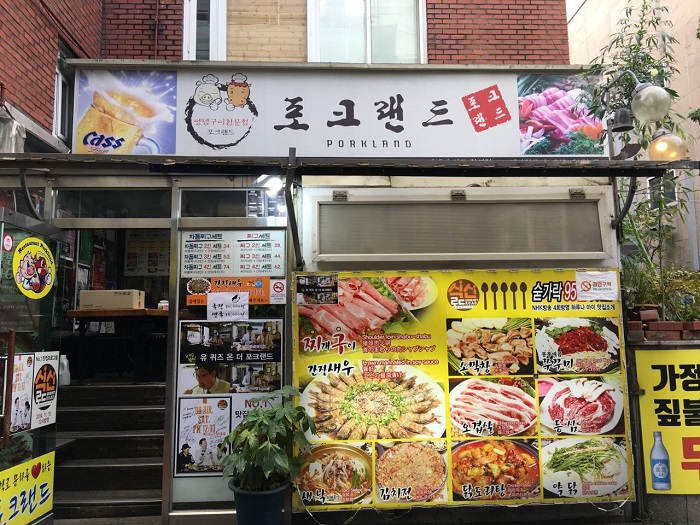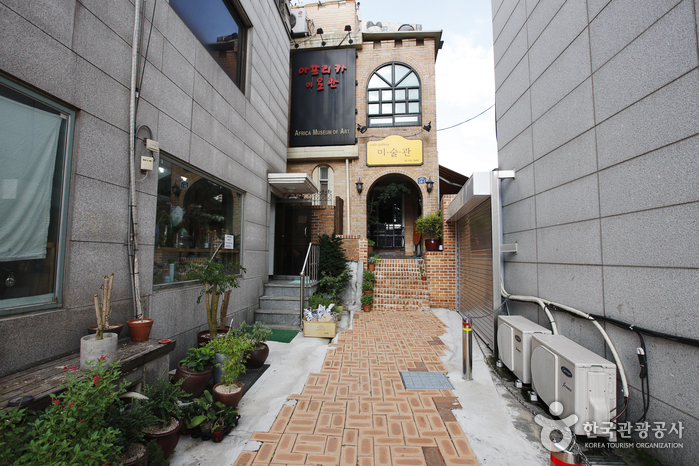PORKLAND (포크랜드)
7.6Km 2021-03-30
258-10, Changgyeonggung-ro, Jongno-gu, Seoul
+82-2-745-7878
It is a place that not only office workers but also college students often visit. The best menu at this restaurant is spicy pork shoulder shabu-shabu. This Korean dishes restaurant is located in Jongno-gu, Seoul.
Africa Museum of Art (아프리카미술관)
7.6Km 2022-10-26
24-1, Samcheong-ro, Jongno-gu, Seoul
+82-2-730-2430
The Africa Museum of Art was established with the purpose of hosting various art festivals and providing the grounds for researching various art themes. A major principle of the gallery is to promote works of art that actively attempt to explore the human mind.
Ralph Lauren - Lotte Avenuel World Tower Branch [Tax Refund Shop] (랄프로렌 롯데에비뉴엘월드타워점)
7.6Km 2024-04-16
4F, 300, Olympic-ro, Songpa-gu, Seoul
-
Damiani Korea - Avenuel World Tower Branch [Tax Refund Shop] (다미아니코리아 에비뉴엘월드타워점)
7.6Km 2024-04-16
300, Olympic-ro, Songpa-gu, Seoul
-
Tasaki - Lotte Avenuel Jamsil Branch [Tax Refund Shop] (타사키 에비뉴엘잠실)
7.6Km 2024-04-17
2F, 300, Olympic-ro, Songpa-gu, Seoul
-
Now Watch - Lotte Avenuel Jamsil Branch [Tax Refund Shop] (나우워치 에비뉴엘잠실)
7.6Km 2024-04-16
300, Olympic-ro, Songpa-gu, Seoul
-
CH Carolina Herrera - Lotte Avenuel Jamsil Branch [Tax Refund Shop] (CH캐롤리나헤레라 에비뉴엘잠실)
7.6Km 2024-04-18
300, Olympic-ro, Songpa-gu, Seoul
-
Paris Miki - Lotte Avenuel Jamsil Branch [Tax Refund Shop] (파리미키 에비뉴엘잠실)
7.6Km 2024-04-18
5F, 300, Olympic-ro, Songpa-gu, Seoul
-
Hugo Boss - Lotte Avenuel World Tower Branch [Tax Refund Shop] (휴고보스 롯데 에비뉴엘월드타워점)
7.6Km 2024-04-18
4F, 300, Olympic-ro, Songpa-gu, Seoul
-
![Bukchon Pharmacy [Tax Refund Shop] (북촌약국)](http://tong.visitkorea.or.kr/cms/resource/83/3314583_image2_1.jpg)


![Ralph Lauren - Lotte Avenuel World Tower Branch [Tax Refund Shop] (랄프로렌 롯데에비뉴엘월드타워점)](http://tong.visitkorea.or.kr/cms/resource/17/2878917_image2_1.jpg)
![Damiani Korea - Avenuel World Tower Branch [Tax Refund Shop] (다미아니코리아 에비뉴엘월드타워점)](http://tong.visitkorea.or.kr/cms/resource/21/2878921_image2_1.jpg)
![Tasaki - Lotte Avenuel Jamsil Branch [Tax Refund Shop] (타사키 에비뉴엘잠실)](http://tong.visitkorea.or.kr/cms/resource/60/2878960_image2_1.jpg)
![Now Watch - Lotte Avenuel Jamsil Branch [Tax Refund Shop] (나우워치 에비뉴엘잠실)](http://tong.visitkorea.or.kr/cms/resource/62/2878962_image2_1.jpg)
![CH Carolina Herrera - Lotte Avenuel Jamsil Branch [Tax Refund Shop] (CH캐롤리나헤레라 에비뉴엘잠실)](http://tong.visitkorea.or.kr/cms/resource/78/2878978_image2_1.jpg)
![Paris Miki - Lotte Avenuel Jamsil Branch [Tax Refund Shop] (파리미키 에비뉴엘잠실)](http://tong.visitkorea.or.kr/cms/resource/02/2879002_image2_1.jpg)
![Hugo Boss - Lotte Avenuel World Tower Branch [Tax Refund Shop] (휴고보스 롯데 에비뉴엘월드타워점)](http://tong.visitkorea.or.kr/cms/resource/26/2879026_image2_1.jpg)
 English
English
 한국어
한국어 日本語
日本語 中文(简体)
中文(简体) Deutsch
Deutsch Français
Français Español
Español Русский
Русский